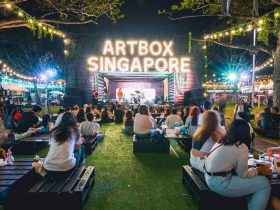Contributed by SINGAPORE ARMCHAIR CRITIC –
About a week ago I was looking through the Population White Paper and was greatly perturbed by the missing definition of a “Singaporean core”
Like many of us, I am concerned about a “diluted” Singaporean identity with the proposed influx of new migrants each year: according to the projected target, “Singaporeans” — which includes a substantial number of new citizens — only make up half the total population by 2030.
As I was trying to tabulate the number of “true blue” Singaporeans, i.e. those who are born and raised in Singapore, I was stumped.

Elusive Numbers
The base figure of 3.29 million Singaporeans in 2012 already included a certain number of new citizens under the government’s liberal immigration policy over the last few years.
That means to tabulate a more meaningful or accurate figure I would have to refer to the citizen population before the floodgates were opened. The problem is how far back should I go, to the 1990s when the citizen population was under 3 million?
This chart below, which was lifted from the Population White Paper, illustrates my dilemma in trying to define a “Singaporean core” in numbers.
Taking the dark blue line to be representing the “true blue” Singaporean population, the distance from the dark blue line to the various dotted lines at any point in time indicates the new citizen population.
By 2060, assuming that our TFR remains at 1.2, you can see that the population of “true blue” Singaporeans is about 2.6 million whereas the population of new citizens admitted from 2012 to 2060 will reach 1.4 million. That means in 2060, for every 10 “true blue” Singaporeans, there are 5.3 new citizens.
However, from 2012 to 2060, many new citizens would have been in Singapore for decades, just like the early generation of Singaporeans – our great grandparents, grandparents or parents – who hailed from India, China and other parts of the world and made Singapore their home.
Would it then be fair to exclude these “new citizens” from the “Singaporean core” I was trying to determine? Evidently not.

True-Blue or Transient Citizen: Only Time will Tell
My exercise in futility, however, does illuminate one very important point: it takes time for a migrant to become integrated and take root as a member of his or her new community.
Many of us know this but may not be able to articulate the reasons behind it.
So far the lack of a coherent discourse has led to fractious exchanges culminating in the pro-migration, self-consciously politically-correct camp labeling detractors as “xenophobic.”
My readers would know that being politically-correct is the least of my concern, so let me play the devil’s advocate and speak my mind from a Singaporean’s point of view.
Is A Permanent Resident Part of the Singaporean Core?
The other day my Chinese colleague, a new PR, asked me if I thought a PR is part of the Singaporean core and I answered, point-blank, “No.”
I said this with the knowledge that she is contemplating taking up Singapore citizenship. If she had taken up Singapore citizenship and posed the question whether I consider a newly minted citizen part of the “Singaporean core,” my answer would still be the same.
Holding the Singapore passport makes one an “instant citizen” but does not make one “Singaporean.” Sylvia Lim, in her recent parliamentary speech, enunciated the distinction between “instant citizens” and the “Singaporean core”:
… instant citizens can be Singaporean in name and have all citizenship rights, but for the Singapore core to be strong, the core must be strongly Singaporean in values, worldview, culture, sense of place and history, and network of friends and family. This can only be cultivated over time, in institutional settings such as schooling, national service and community service. A strong Singaporean core should be made up of Singaporeans who grow up in and with Singapore.
Some new citizens were piqued by Sylvia’s words. MP Amy Khor also asked Sylvia if she was deemed any less Singaporean because she was not born in Singapore. She further asserted that “It is unhelpful and unfair to distinguish between local born Singaporeans and new citizens and cast doubts on the loyalty of the latter.”
Amy Khor was probably speaking for herself and she, who has demonstrated her commitment to Singapore by joining the government (whether you approve of her decision is another matter), is hardly representative of all new citizens.
A survey shows there is reason enough for true blue Singaporeans to doubt the loyalty of new citizens.
When asked what it takes for new migrants to be considered Singaporean, 69% of Singapore-born citizens said they should send their sons to serve National Service (NS) while only 43% of foreign-born citizens thought so.
The 2012 news report also revealed that about one third of second generation male PRs – some 4,200 persons – had renounced their PR over the last 5 years to be exempted from serving NS.
On top of that, an average of 300 naturalized citizens renounced their Singapore citizenship each year from 2007 to 2011.
Long-Distance Nationalism
To further understand why the transition from new citizen to true blue Singaporean can only eventuate with the passage of time, we may ask this question: What induces someone to leave his homeland, give up his citizenship and take up a new one?
As someone who had mulled over emigrating and renouncing my Singapore citizenship, and who have a number of friends that are PRs or naturalised citizens, let me give my take on the issue.

The decision to migrate is shaped by push and pull factors, costs and benefits. Ultimately, emigrants relocate in seek of greener pastures, defined variedly by economic incentives such as better career prospects, lower taxes and more comprehensive social welfare, and other advantages such as a safer living environment, the ease of traveling with the new passport and so forth.
Migration, therefore, is an exercise in the optimization of one’s multiple needs. It is about how much one can gain from the move to the destination country. In many senses, it is a self-centered and highly rational decision.
In contrast to the cost-benefit calculations that weigh upon one’s decision to migrate, intangible and emotional attachments continue to bind a migrant to his home country.
These invisible ties may manifest as a craving for local food (overseas Singaporeans would be no stranger to this); a keen interest in events transpiring in one’s home country despite being physically away; a desire to seek comfort in the familiar by consorting with fellow countrymen from one’s homeland.
Thus a Singaporean-turned-Australian may still be closely watching the political developments in Singapore; a Chinese national-turned-Singaporean may know the who’s who in the Chinese Communist Party but not the Singapore Cabinet.
The term “long-distance nationalism” (coined by Benedict Anderson) succinctly captures this phenomenon of retaining affiliations with and affection toward one’s home country from a distance.
And Singapore is a highly attractive destination for migrants precisely because it gives them the freedom of maintaining an open identity, as attested by the verdicts here.
Our liberal granting of permanent residency –79,000 new PRs granted at its peak in 2008 – further reduces the opportunity costs of relocation, encourages migrants to keep their choices open, to the extent of using the Singapore PR and the resources accumulated during their stay as a stepping stone to even greener pastures up north.
Newly-minted citizens may fulfill their basic duties as law-abiding and tax-paying citizens but other than that, only the conscientious ones will reflect on what contributions they can make to the destination country in return for the benefits they enjoy.
To cite a cliché “home is where the heart is”, time has to elapse before a new migrant develops profound emotional ties – through imbibing local cultures and building a social network of family and friends – that outweigh cold, rational calculations to leave or stay in Singapore should circumstances here take a turn for the worse.
And that is why Amy Khor’s defensive response to Sylvia’s speech, while understandable from the perspective of a naturalized citizen, is facile for missing the complexities that underlie a meaningful “Singaporean core.”
By Singapore Armchair Critic, a blog about politics and policies in Singapore and beyond.
This article first appeared on the author’s blog here.
ADVERTISEMENTS











Leave a Reply